
Apr 21, 2022 | newsroom
ShipHero’s industry-leading eCommerce fulfillment solutions are getting noticed! CB Insights has recognized ShipHero as one of the top leaders in eCommerce fulfillment and logistics.
Our record of dependable shipping and unmatched customer support has made ShipHero one of the most reliable fulfillment service providers on the market.
Read more at CBInsights.com
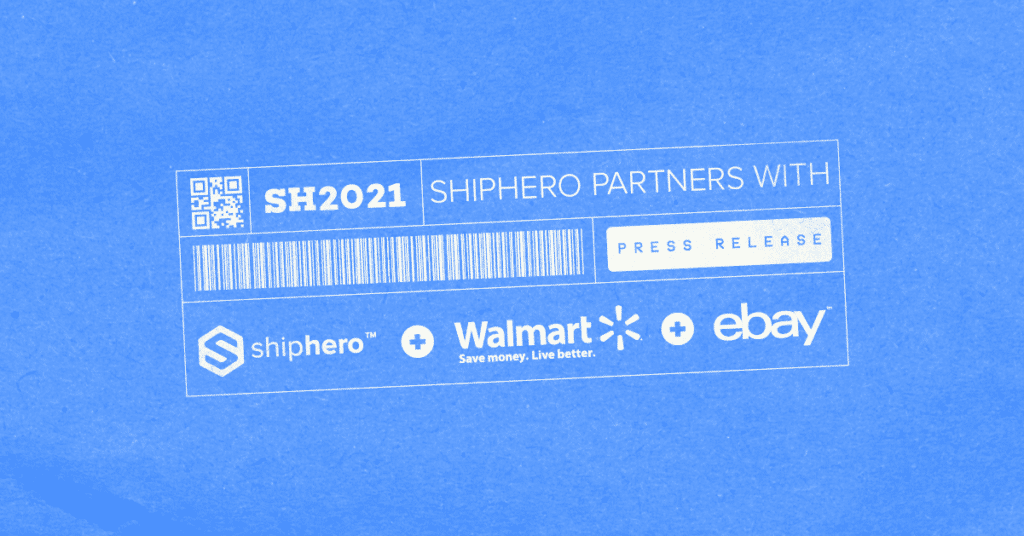
Aug 16, 2021 | newsroom
New Walmart and eBay integrations make ShipHero a Stronger Fulfillment Partner
ShipHero is proud to announce that we have recently finalized in-app integrations with both Walmart and eBay. With this new capability, Walmart and eBay customers will find it easier than ever to fulfill and ship orders with ShipHero. Plus, this means better inventory management across all ShipHero clients’ connected stores.
How Integration Works for Ecommerce Partners
Any ShipHero Fulfillment client, that is also a Walmart or eBay customer, can now connect their Walmart and eBay stores to ShipHero’s fulfillment solution. By integrating with these two major ecommerce brands, ShipHero is giving its customers more options for how to manage and fulfill orders, as well as allowing their inventory to sync across all of their store connections.
The more integrated ShipHero’s customer stores are, the easier it will be to manage inventory, returns and fulfillment. ShipHero believes that these types of partnerships are what allow us to give our customers superpowers – whether it’s managing a warehouse, inventory or fulfillment, ShipHero’s ability to partner with large names that Walmart and eBay make us an invaluable part of the ecommerce space.
A New Tool Added to an Already Full Toolkit
Over the last year, ShipHero has seen massive growth due to the sharp rise in ecommerce spending and transactions throughout the worst of the COVID-19 pandemic. Through all of that growth, ShipHero has worked to bring valuable and useful tools to new and existing clients to make their ecommerce businesses grow.
ShipHero has recently rolled out similar integrations with companies like Fedex and DHL, and is always looking for ways to further expand the capabilities of our fulfillment solutions. ShipHero was founded on the belief that ecommerce fulfillment and warehouse management shouldn’t be so hard … and if it is, we have the superpowers to make it easier.
If you’re an existing ShipHero customer, you can contact your Customer Success Manager (CSM) today to find out how ShipHero can help you connect your Walmart and eBay account with ShipHero. Walmart customers may also follow the instructions outlined HERE.
If you’re new to ShipHero Fulfillment, please schedule a meeting today with our experts to learn more about how we can help you get your orders picked, packed, and delivered with our fulfillment service. No setup fees, simply pay as you go. ShipHero works to ensure that organizations invest in the solutions that match their needs, to improve productivity, revenue, and success.
Click HERE to Schedule a Meeting Today
Be sure to follow ShipHero on Twitter & LinkedIn today to stay up to date with the latest company news.
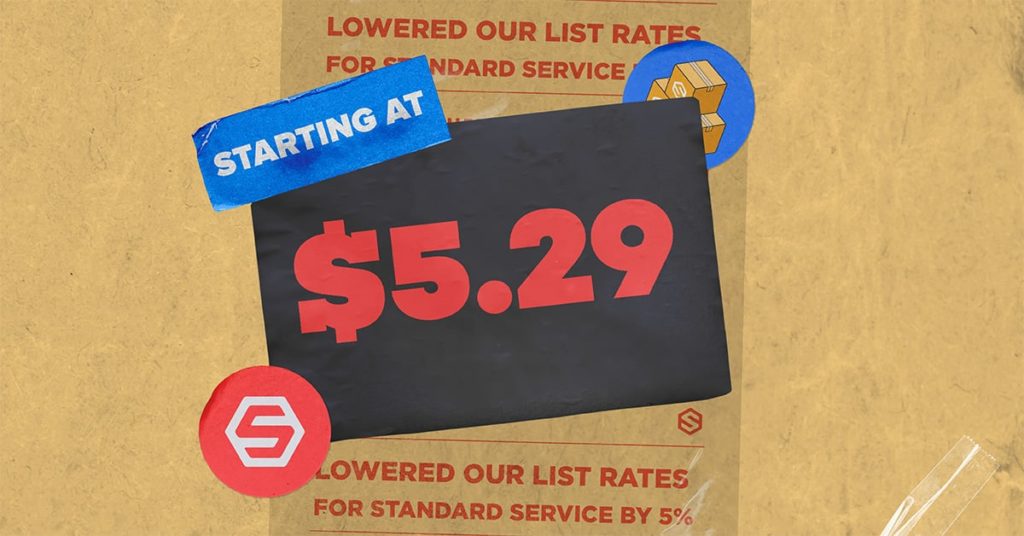
Jul 7, 2021 | Blog, Fulfillment, News & Updates
By: Aaron Rubin, Founder & CEO at ShipHero
ShipHero Fulfillment is excited to announce that effective today, July 7, 2021, we have lowered our list rates for Standard Service by 5%, which now start at $5.29! Our 2 day service retains the same very low pricing; for example, 5lbs anywhere within the 48 lower states in 2 days is $13.97 – no residential surcharges, no fuel surcharges.
ShipHero understands how important it is to be able to offer customers the lowest available shipping rates. This is the driving purpose behind our reduced standard shipping rates, we want to help our customers to reduce their overall shipping costs. Our team continues to focus on quality and service above all and we’re expanding our footprint with an additional 400,000 sq ft of warehouse space in Las Vegas and the southeast.
Important Facts:
- The price reduction is only for List Rates for Standard Service, not Expedited.
- Visit our fulfillment pricing page online today for more information HERE.
- Download our new pricing sheet with the lower prices HERE.
If you’re an existing ShipHero Fulfilment customer, you can contact your Customer Success Manager (CSM) today for any questions you may have.
If you’re new to ShipHero Fulfillment, please schedule a meeting today with our experts to learn more about how we can help you get your orders picked, packed, and delivered with our fulfillment service. No setup fees – simply pay as you go. ShipHero works to ensure that organizations invest in the solutions that match their needs, to improve productivity, revenue, and success.
Click HERE to Schedule a Meeting Today
Aaron Rubin, Founder & CEO
ShipHero
About the author: Aaron Rubin the Founder & CEO of ShipHero. He is responsible for planning and executing the overall vision and strategy of the organization. Rubin’s greatest strengths are leadership, change management, strategic planning and a passion for progression. He is known for having his finger on the pulse of ShipHero’s major initiatives, his entrepreneurial spirit, and keen business acumen. His leadership of ShipHero is grounded in providing excellent customer service that drives improved business operations. His passion for ShipHero comes from the culture and his ability to have an impact on the lives of employees, customers, partners, and investors.
Follow Aaron on Twitter & LinkedIn.
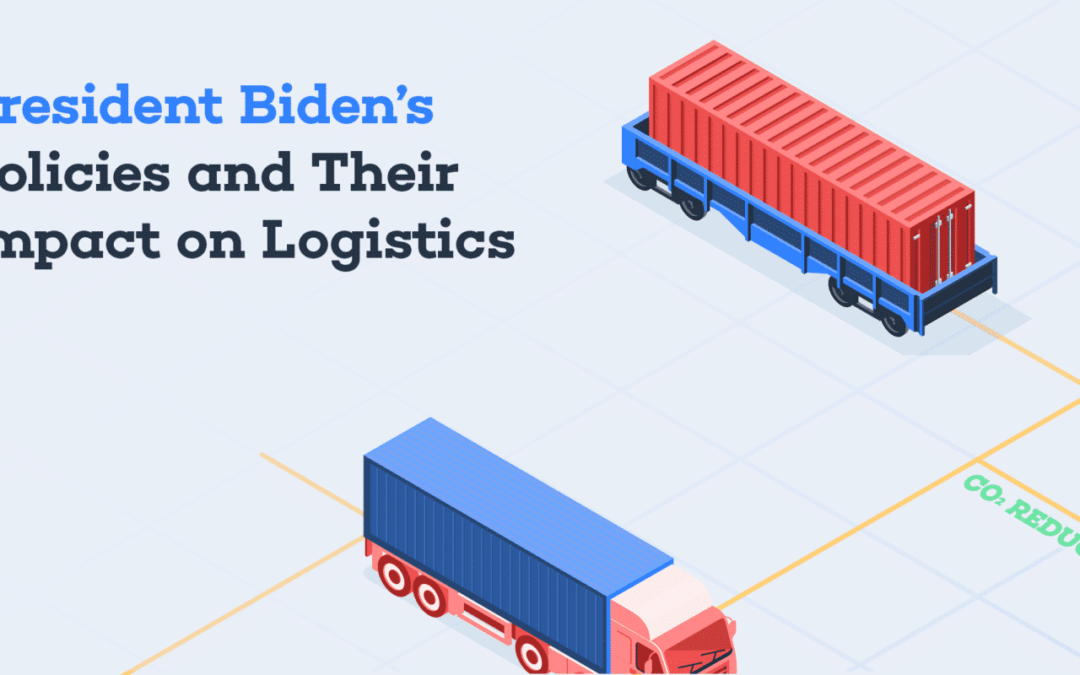
Feb 11, 2021 | Best Practices, Blog, Fulfillment, Warehouse Management Software, Warehouse Operations
The incumbent President of the United States made quick work in demonstrating to our citizens and the rest of the world exactly what our country’s priorities will be for the next four years and beyond. Within his first week of taking office, President Joe Biden enacted a long list of executive orders that sought solutions to the pressing issues stemming from the COVID-19 pandemic, immigration, and climate change.
Sustainability has been of great importance to the Biden administration since his Vice Presidency, and continued to be a main aspect of his campaign during the 2020 election, so it came as no surprise when President Joe Biden signed an executive order to initiate his plan to combat climate change through a Clean Energy Revolution and Environmental Justice.
No matter who you voted for, it’s time to get acquainted with his stance on climate change, what measures the government will be taking to lower our carbon footprint, and how the logistics industry will be impacted. In essence, it comes down to carbon emissions and the railroad.
Carbon Emissions
Under Biden’s leadership, the United States rejoined the Paris Agreement on climate change, which calls us to determine a reduction target for emissions and direct our federal agencies to execute on that promise.
For example, US agencies have been directed to purchase American-made, zero-emission vehicles, and suspend new oil and natural gas leases on public lands in hopes to conserve at least 30% of federal lands and waters over the next ten years.
The Biden Plan for a Clean Energy Revolution and Environmental Justice also promises to make major public investments in automobile infrastructure, including 500,000 electric vehicle charging stations, while accelerating R&D on battery technology and battery production. This is sure to increase production and widespread use of EV vehicles, buses, and trucks for transportation.
Impact to Logistics
Sustainability
As the current pandemic situation unfolds, sustainability in the supply chain has gone by the wayside as urgency and necessity push for speed and reliability in shipping. But even still, some shoppers opt to use the Amazon Day feature to try and offset their purchases with their rationale being, if they have to come here, at least let them bring more than one thing. Post-COVID however, sustainability will be sure to resume as a large priority for consumers and retailers once more.
For fulfillment providers, retailers will push for low-carbon and zero-carbon (if not negative) emissions throughout the supply chain. There will be a push for clean transportation options, namely electric vehicles (EV) including electric trucks for long-distance shipping, whereas air freight has the worst carbon emissions.
Although it remains unclear what Environmental Justice specifically entails, we don’t find it out of the realm of possibilities that a national carbon tax could be introduced similar to Canada, Britain or some US states, or rather an incentivized stimulus for low-emitting companies. If enacted, a carbon tax could make logistics companies like Amazon rethink their air-heavy fulfillment strategy and make way for 3PLs that are built on sustainable practices.
But where, WHERE, are these sustainable transportation methods coming from?, you may have shouted into your computer screen. Well, toot toot, the answer to that falls on…
The Railroad
Biden’s plan aims to spark “The Second Great Railroad Revolution”, a push to modernize US rail infrastructure, which will ensure that we have the cleanest, safest, and fastest rail system in the world — for both passengers and freight.
A US Rail Revolution will not only reduce pollution, by working with Amtrak and private freight rail companies to further electrify the rail system, but also provide workers with “good, union” jobs and stimulate investment in communities better linked to major metropolitan areas. In order to streamline the loan process and make capital more available for the railway industry, Biden has tapped existing federal grant and loan programs at the US Department of Transportation.
Impact to Logistics
Multi-modal
Currently, fulfillment is dominated by ground travel, with long-distance trucking and last-mile delivery vans. Although rail freight can carry 400 times what a single truckload can with much fewer emissions, the current process for fulfillment by rail is too complex and downright costly. However, Biden’s plan could be the answer for this.
By modernizing rail freight and designing it for today’s eCommerce world, rail freight could once again become a viable option, and 3PL providers that account for this shift could disrupt the logistics industry entirely by cornering the multi-modal transportation space.
Multi-modal transport (also known as combined transport) is the transportation of goods under a single contract, but performed with at least two different modes of transport, often performed by contracted sub-carriers. The carrier responsible for the entire carriage is referred to as a multimodal transport operator, or MTO.
So, any 3PL that can become the leading MTO could position themselves to become the 4th major player in logistics and fulfillment, with UPS and Fedex at capacity, and Amazon weighed down by its traditional infrastructure.
Conclusion
We’re no fulfill-osophers, but we do predict that a smart logistics provider like ShipHero, one built to scale through agility, will be perfectly positioned to quickly claim market share and delight their customers with sustainable shipping and multi-modal options.
Through use of already existing clean energy and green technologies, the logistics industry can lead the way towards sustainable practices in eCommerce supply chains. Moreover, the pandemic-caused boom of eCommerce has given rise to a plethora of opportunities and growth in the fulfillment space; and where money goes, progress follows.
Investments to improve fulfillment practices driven by big data and blockchain will be the spark necessary for companies to derive ROI from their sustainable practices, and effectively contribute to Green Joe’s climate plan.
Learn more about ShipHero’s industry-leading warehouse management software.
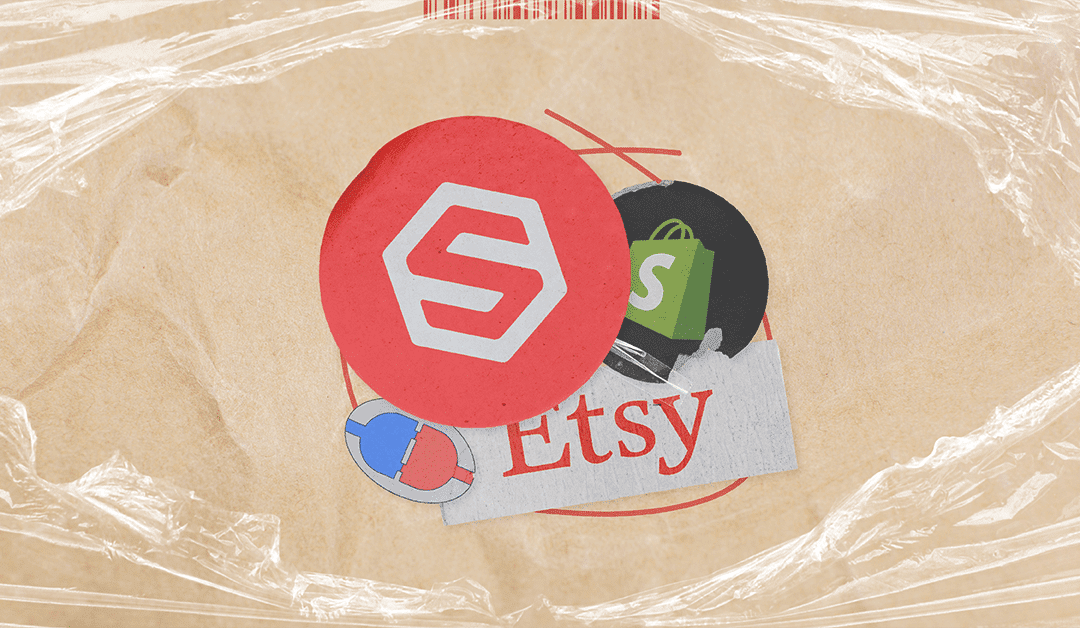
Jan 17, 2022 | Blog, Fulfillment, Warehouse Management Software
By: Aaron Rubin, Founder & CEO of ShipHero
At a glance, selling on marketplaces like Amazon, eBay, Etsy, and others seems like a golden ticket for new and growing eCommerce businesses. The idea of selling products on the biggest marketplaces in the world should, in theory, increase your sales and grow your company. But there’s always something brands overlook when it comes to selling on marketplaces: order fulfillment.
How can you fulfill orders across multiple marketplaces that have their own shipping policies or customer expectations? With disparate data coming in from so many systems, it can be tough to fulfill orders and ensure you have enough inventory for all of them.
Marketplace fulfillment comes with its fair share of drawbacks that you should be familiar with before finalizing your decision. Fortunately, eCommerce brands can overcome these challenges with some help. There’s a reason almost 90% of Fortune 500 businesses are using 3PL providers instead to fulfill their orders.
The issues with marketplace fulfillment
eCommerce marketplaces have lowered the barrier of entry for new brands and contributed to the eCommerce industry’s rapid growth. However, the model isn’t flawless. Here are some of the most common problems eCommerce brands face with marketplace fulfillment:
No direct integrations with marketplaces
As your brand grows, integrations are vital to maintaining a seamless workflow. However, switching between different platforms to obtain crucial information is time-exhaustive and inefficient, inviting delays and possible errors.
Additionally, direct integrations are vital for streamlining fulfillment operations – they’re necessary to gain real-time order information and update inventory data according to recent orders.
Hard to sync inventory data between multiple marketplaces
Many sellers list their products on multiple marketplaces to reach a wider audience. However, this practice makes it difficult to sync your inventory data. If orders are fulfilled at different marketplaces, you’re prone to losing track of inventory counts, leading to shortages or overstocking.
Lack of centralized data to see which channels are performing best
Performance monitoring is critical for growing eCommerce brands; you need to identify areas of improvement and learn from your successes. Unfortunately, eCommerce marketplaces don’t offer centralized data, including key performance analytics and fulfillment insights.
Without the correct data, it’s challenging to monitor your brand’s success or lack thereof. Additionally, having access to meaningful insights helps brands streamline their marketing and customer support efforts.
Multiple fulfillment methods make it difficult to keep track of orders
Many eCommerce brands offer customers multiple fulfillment options, including various delivery options (including overnight and 2-day delivery), order pick-up, or mail-order delivery.
Unfortunately, the more options you offer, the more difficult keeping track of orders becomes. For example, if customers have arranged to pick the order up, you’ll have to keep track of whether the order was picked or if there’s been a rescheduling.
Hard to meet Amazon’s stringent requirements for Prime shipping
Amazon’s latest Seller Fulfilled Prime (SFP) option seems to offer eCommerce merchants the best of two worlds – you get access to the exclusive Prime label but retain autonomy over your fulfillment operations.
Unfortunately, while SFP fulfillment is an excellent idea, in theory, Amazon’s stringent requirements make it challenging to qualify for the program. To maintain the exclusive SFP status, your Prime trial orders must have a cancellation rate of less than 1%, a minimum 99% on-time rate, and all orders placed before 2 pm have to be fulfilled and shipped on the same day.
How to improve marketplace fulfillment
While marketplace fulfillment comes with its fair share of drawbacks, you can streamline and optimize the fulfillment process with some help.
Leverage software that integrates with multiple marketplaces
Merchants can integrate advanced inventory and warehouse management system software with marketplaces to organize all relevant data, analytics, and insights in one place.
The right fulfillment software gives you access to order details in real-time, helps monitor sales and performance metrics, and reliably monitor inventory levels and forecast demand.
Work with a 3PL that offers fast shipping speeds
Meeting the shipping expectations of modern consumers is increasingly difficult, but third-party logistics providers help you provide expedited shipping options without incurring high costs.
Given that 43% of abandoned carts are due to high shipping charges, and 54% of consumers under 25 declared same-day delivery as their top purchase driver, growing eCommerce brands need to step up their logistics game.
Make use of distributed inventory to cut down on shipping costs
Distributing inventory across multiple, strategically-placed fulfillment centers helps eCommerce brands simultaneously provide faster shipping times and reduce last-mile delivery costs. This is because, with a distributed inventory, you can ship products to customers from the fulfillment centers closest to them.
How ShipHero improves marketplace fulfillment
ShipHero’s leading warehouse management solution and fulfillment services help growing eCommerce brands optimize marketplace fulfillment. Our fully integrated system syncs your inventory and eCommerce store data, and you can set automation rules to streamline tedious processes.
ShipHero helps eCommerce brands grow sustainably with our:
Done-for-you fulfillment services for multiple marketplaces
ShipHero’s outsourced fulfillment services take the pressure of order fulfillment off your hands, so you can focus on growing your store. We’ll manage your inventory, pick and pack orders (and ship them, too), and take care of reverse logistics regardless of how many marketplaces you’re selling on.
Thanks to ShipHero’s leading warehouse management system and team of fulfillment experts, fast-growing eCommerce brands like yours can keep up with evolving consumer expectations. With our network of distributed fulfillment centers, you can offer customers 2-day and overnight delivery options without incurring high last-mile delivery costs.
Our highly trained workforce and advanced software collectively minimize pick and pack errors, reducing wrong order requests and protecting your bottom line.
Multiple marketplace integrations
Whether you’ve partnered with Amazon, eBay, Etsy, Walmart, or another marketplace, ShipHero’s warehouse management system integrates directly with your marketplace and centralizes all the relevant information.
You can view inventory data in real-time, access team reports, view order history, and access key information like actual shipping costs for each order, all from one central dashboard.
Easy returns management
Your returns process dramatically impacts customer loyalty, and you don’t need to take our word for it. A report revealed that a positive return experience affects brand loyalty in 95% of online customers, and over 65% of online shoppers consult a brand’s return policy before making a purchase.
To meet consumer expectations and help our eCommerce partners secure customer loyalty, ShipHero offers done-for-you returns management and reverse logistics services. ShipHero integrates with your marketplace and manages returns as they come in, preventing delays and improving customer retention.
Conclusion
Marketplace fulfillment comes with its fair share of drawbacks, including a lack of integrations, disorganized data, analytics, and stringent requirements to qualify for more recognized fulfillment programs.
Thus, many growing eCommerce brands partner with ShipHero to overcome these challenges and optimize their marketplace fulfillment. With ShipHero, online retailers can offer expedited shipping times, minimize pick and pack errors, manage returns easily, and centralize their real-time inventory and order data.
Optimize your marketplace fulfillment with ShipHero today.
Schedule a meeting today with our experts to learn more about our inventory management and shipping software built for eCommerce brands & 3PLs looking to run their best warehouse and how ShipHero works to ensure that organizations invest in the solutions that match their needs, to improve productivity, revenue, and success.
Click HERE to Schedule a Meeting Today
Aaron Rubin, Founder & CEO
ShipHero
About the author: Aaron Rubin is the Founder & CEO of ShipHero. He is responsible for planning and executing the overall vision and strategy of the organization. Rubin’s greatest strengths are leadership, change management, strategic planning and a passion for progression. He is known for having his finger on the pulse of ShipHero’s major initiatives, his entrepreneurial spirit, and keen business acumen. His leadership of ShipHero is grounded in providing excellent customer service that drives improved business operations. His passion for ShipHero comes from the culture and his ability to have an impact on the lives of employees, customers, partners, and investors.
Follow Aaron on Twitter & LinkedIn.
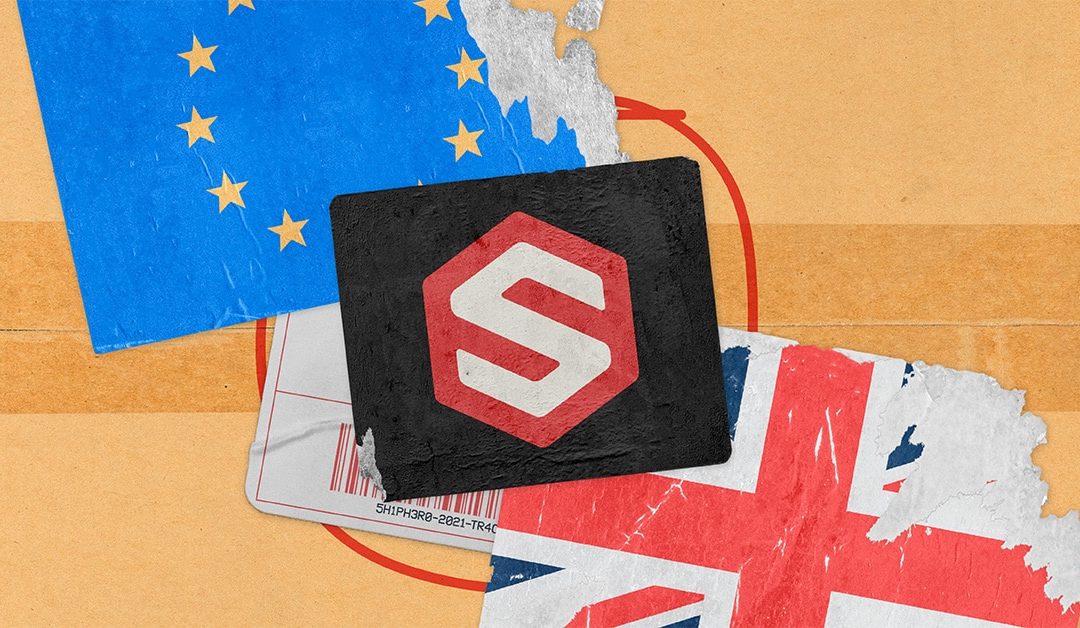
Jul 7, 2021 | Blog, News & Updates, Warehouse Management Software
By: Aaron Rubin, Founder & CEO at ShipHero
Effective July 1, 2021, the EU & UK will begin enforcing the eCommerce VAT Package and One Stop Shop (OSS), which includes new rules regarding eCommerce and VAT. These rules will impact all businesses in the supply chain, including individual sellers and marketplaces. All distance sellers within and trading with the EU & UK must update their VAT requirements as this package replaces existing distance-selling rules and extends the Mini One Stop Shop (MOSS) into a wider-ranging One Stop Shop (OSS). Full details from the European Union may be found online.
There will be a lower pan-EU & UK threshold of €10,000 (€0 for businesses established outside the EU), which means businesses will need to account for VAT on additional supplies.
One Stop Shop (OSS):
Many businesses may be able to register in one Member State and report all EU & UK transactions through a single OSS return. Your payments will be collected and distributed from the tax authority in the Member State to other states where VAT is to be paid.
New OSS Schemes:

European Commission, New Future Proof VAT Rules
Important Facts:
- Removing the distance selling thresholds for sales of goods and setting a unified threshold of 10.000 euros.
- Expanding the Mini One Stop Shop (MOSS) by launching the new One Stop Shop (OSS).
- Ending the low-value import VAT exemption and introducing the new IOSS.
- Online marketplaces will be deemed the seller for collecting and reporting VAT.
- New record-keeping requirements will be introduced for online marketplaces facilitating supplies of goods and services.
- Special arrangements in order to simplify imported goods with a value of less than €150 in case the IOSS (import one-stop-shop) is not used.
ShipHero Software Updates:
Your ShipHero software includes a new VAT field to help automate the new processes. Please read the ShipHero knowledgebase article on how to set up eCommerce VAT in ShipHero today HERE.
The following have been updated to support the new fields:
- Public API
- New Order CSV upload
- Automation Rules
- Order Detail page
- Generate Label Workbook
For carriers, the following are done:
- Shippo
- DHL ecomm v4
- FedEx
- Endicia
- Firstmile
- Globegistics
- Endicia
In progress are:
- DHL Express
- UPS
- Webshipper
- Asendia
- Canada Post
- Purolator
- NZ Post
- Australia Post
If you’re an existing ShipHero customer, you can contact your Customer Success Manager (CSM) today to find out how ShipHero can help you navigate the new EU & UK eCommerce VAT and OSS Package requirements.
If you’re new to ShipHero, please schedule a meeting today with our experts to learn more about our WMS software built for ecommerce brands & 3PLs looking to run their best warehouse and how ShipHero works to ensure that organizations invest in the solutions that match their needs, to improve productivity, revenue, and success.
Click HERE to Schedule a Meeting Today
Aaron Rubin, Founder & CEO
ShipHero
About the author: Aaron Rubin the Founder & CEO of ShipHero. He is responsible for planning and executing the overall vision and strategy of the organization. Rubin’s greatest strengths are leadership, change management, strategic planning and a passion for progression. He is known for having his finger on the pulse of ShipHero’s major initiatives, his entrepreneurial spirit, and keen business acumen. His leadership of ShipHero is grounded in providing excellent customer service that drives improved business operations. His passion for ShipHero comes from the culture and his ability to have an impact on the lives of employees, customers, partners, and investors.
Follow Aaron on Twitter & LinkedIn.
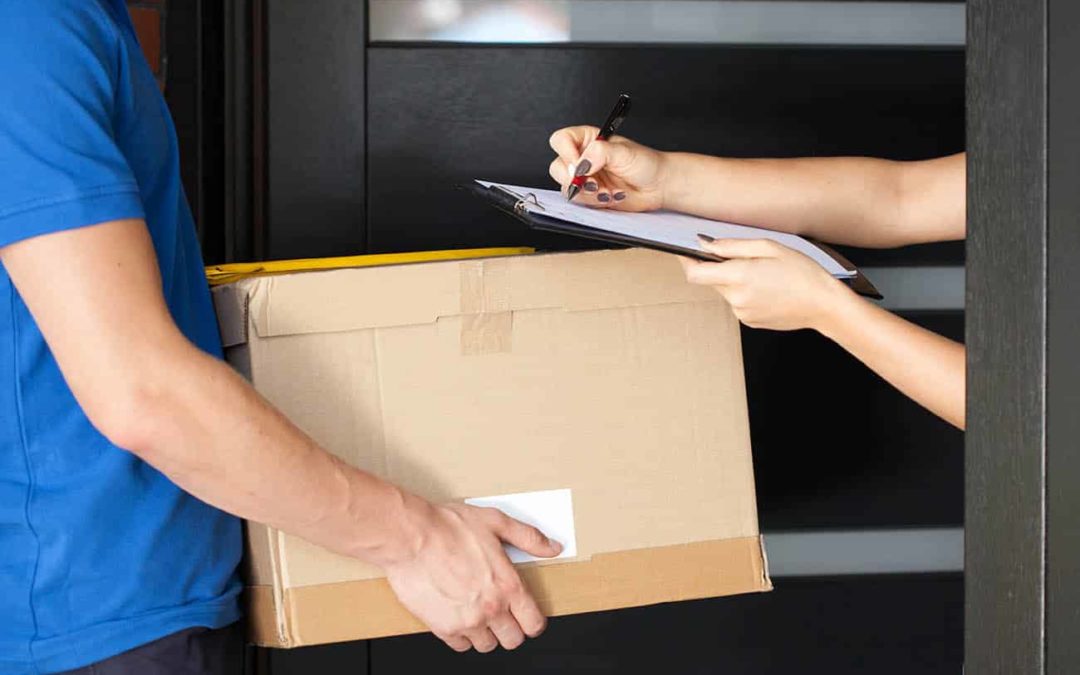
Apr 22, 2021 | Blog, Warehouse Management Software
The secret to success with any ecommerce business is to keep your customers happy. Rapid order fulfillment, free shipping, and excellent customer service are some of the best ways to do that. When determining an ecommerce business plan, many fail to factor in (or underestimate) product returns.
Returns are a necessary evil for any ecommerce business, and if you don’t handle them properly, they could swiftly break you. Frequent returns negatively impact your profit margins but also destroy conversion rates, bring down customer loyalty,, and threaten the survival of your business as a whole. Developing and enforcing a strong returns policy is a must if you want your business to be successful. Counteracting return fraud should also be a focus to further prevent lost profits.
In this article, we’ll cover the ways in which your return policy impacts sales and how to change your policy to benefit your business. We’ll also cover some of the best ecommerce return practices to make sure that returns don’t ruin your business.
The State of E-Commerce Returns
In 2017, there were over 1.6 billion digital buyers around the globe – that’s more than 20% of the world’s population. What’s more is that number is projected to increase to over 2.1 billion by 2021. Though the e-commerce market presents nearly limitless possibilities for retail businesses, it does come with its challenges.
Reaching your target audience can be tricky when you have billions of potential customers, and you must compete with dozens or even hundreds of businesses like yours. In the wide world of ecommerce, it’s the little things that make your business stand out – things like your return policy and refund policy.
According to Star Business Journal, returns at brick-and-mortar stores hover around 8% to 10% while returns for online retailers are nearly double at 20%. Furthermore, returns can be extremely expensive for a business – particularly during the holidays. Here are some eye-opening statistics:
- Over 40% of online purchases include multiple sizes or variations with the intent of returning unwanted items.
- 77% of online returns come from repeat customers.
- 95% of online shoppers say a positive return experience affects brand loyalty.
- On average, it takes 28% of businesses two weeks to add a returned item back into inventory.
To account for the logistics of returns, many businesses take steps such as increasing their workforce, adding more warehouse space, and creating separate departments to handle returns. All of these factor into an ever-dwindling profit margin as the cost of returns grows higher.
Before getting into the details of how you can keep ecommerce returns from potentially ruining your business, let’s take a closer look at some of the ways returns affect your overall profitability.
How Do Ecommerce Returns Affect Your Profitability?
To a certain degree, keeping your customers happy is about transparency. Customer expectations in the world of online shopping are high considering they can switch to a competitor’s site or Amazon in just a few seconds.
The customer experience in today’s world is critical to success. Your customers want to know that the products they are purchasing are of the highest quality and they are getting the best value for their money. Customers want to know their order will be processed quickly and efficiently and that they can contact customer service with questions or concerns, which will be resolved in a timely manner. They also want to know what your return policy is upfront, before clicking “buy”.
Your ecommerce return policy affects your business more than you may realize. According to recent research, about 67% of online shoppers will check a company’s return policy before buying. What do customers like and dislike about return policies? Let’s take a look…
- About 80% of consumers surveyed expect free returns.
- Only 25% of online merchants offer free returns.
- Over 83% of consumers read a company’s return policy before buying.
- About 71% of customers decide not to purchase when restocking fees are charged for returns.
As an ecommerce business owner, you need to account for all variables when it comes to profitability. While it might cost your company money to offer free returns, doing so could, in turn, boost your sales. In fact, customers are twice as likely to make a large purchase (over $1,000) online if free returns are offered.
To give you an example of what a good return policy can do for your business, consider the Zappos model. They were the first ecommerce retailer to offer a 365-day, free two-way shipping, and returns policy. What’s more, is that the free return shipping policy allowed customers to return their shoes for any reason. This was absolutely unheard of in 1999.
According to Zappos’ VP of Services and Operations, the company’s best customers have the highest return rates (up to 50% of everything they purchase) but they also spend the most money which makes them the company’s most profitable customers. At first glance, it may sound like their return policy is hurting business but, over time, those loyal customers end up spending more, which offsets their returns.
Simply put, a lenient return policy (when properly executed) can make a huge difference for your business and for your profit margins by creating a more loyal customer base.
What Really Drives Returns?
In order to improve your returns policy, you first need to gain a better understanding of who is returning your goods and why. Here are some of the most common reasons for returns:
- Damaged Goods – Items arrive at the customer’s door having been damaged prior to or during the shipping process.
- Mis-Delivered or Undelivered Goods – Items fail to arrive at the desired destination.
- Malfunctioning Goods – Items arrive at the desired location but do not work properly.
- Gift Returns – Items are received as gifts and returned by the giftee if they don’t want the product.
- Exchanges – Items are exchanged for another item.
- Inaccurate Description – Items received are not as described, either in terms of size or style.
- Changed Mind – The customer simply changed their mind about the product.
In addition to identifying why certain items are being returned, it is also helpful to develop customer profiles to determine who is making the most returns and how to prevent it from damaging your business. For example, some customers intentionally take advantage of lenient returns policies by purchasing items to wear once and have no intention of keeping them after. There are also others who order multiple sizes and options for the sole purpose of trying them on at home.
Having developed a better understanding of your customer base and the most common reasons for returns, you can now work on developing a stronger return policy.
Tips for Developing a Hassle-free Returns Policy
Now that you understand that the majority of customers will check a company’s return policy before making a purchase. It is also important to note that nearly 50% of customers will continue buying from a company if they have a hassle-free return policy. So, how do you create a return policy that improves your profit margins while also retaining your customers?
Here are some simple tips to help you develop a strong return policy that wins over customers while keeping return rates low:
Offer returns in a specific time window
Your customers want to know that if they aren’t satisfied, they’ll be able to return the item easily. For example, if you sell footwear, your return policy can state that all shoes can be returned within 30 days if they’re still in good condition.
Keep your return policy clear and concise
A clear return policy makes it easy for customers to understand which products can be returned and which can’t. If you have products that have a separate return policy, be sure to list them on the product page so customers are aware of any special return policies.
Make your policy easy to find
Your customer shouldn’t have to search for it. A strong return policy should show that you stand behind your product to instill confidence in your business to build trust with the consumer.
Never copy a return policy from another company
You should personalize your return policy to your business and products. While there are templates available to help you craft a return policy, they’re meant to be customized to your brand’s unique return policy.
Try to keep the language light
Avoid phrases like “you must” and “you are required to.” You want your returns process to be easy, not scary.
Be clear about what the customer can expect during the process.
Some customers expect immediate refunds or a gift card when returning a product. Your return policy should list out the steps involved during the return process so they know how it all works.
Make it clear whether you offer an exchange for returned products or if you provide store credit or a full refund.
The bane of any online retailer’s return policy is deciding between full refunds or store credit. While there is no one clear answer as to which one to choose, we recommend surveying your customers to see what they’d prefer.
Give specific instructions about the procedure for returns and exchanges.
Tell the customer whether they need to use the original packaging or if they can use their own. Tell them if they need to include the order slip and if they can print a return label online.
Educate your staff
So they understand the return policy and can communicate it to your customers quickly and efficiently. If your staff is confused about the returns policy, it could lead to negative interactions with customers when they try to return products.
No company is perfect but having a strong returns policy will prevent returns from destroying your business. Even with a strong policy, however, you should be prepared to take a hit now and again. If you make a mistake with shipping or packaging, you may be forced to eat the cost yourself for the sake of keeping your customer happy. Unlike physical stores, customers can’t just walk in and return a product at no cost to you. Always keep the customer and your long-term bottom line in mind.
What About Reverse Logistics?
The term reverse logistics is sometimes used interchangeably with returns, but they are not quite the same. Technically speaking, reverse logistics refers to monitoring the life-cycle of a product after it arrives at the customer’s door. This includes the ways the product can be reused, how it should be disposed of, and other ways to create value with an expired product – it also involves the return of products from the end consumer back to the manufacturer.
In order to develop a reverse logistics procedure, you need to first think about the different stages a product goes through during a return. First, you’ll need to consider the physical shipping of the returned product – how you will get it from the customer back to the warehouse. Next, you may need to test the returned item to identify existing flaws and document any problems. Then, you’ll need to repair, recycle, or restock the item.
To help you get a better understanding of the reverse logistics portion of your company’s supply chain, there are four key analytics to consider:
- Volume – Take a look at which products are being returned most often – if it’s a large volume of the same products, you may need to consider a recall or make changes to your production.
- Percent of Sales – What percent of your net sales is lost to returns and how many of the returned items can be reincorporated back into your inventory?
- Product Condition – See if you can identify a pattern of failure or malfunction to determine what is going wrong with the product and what condition it is in when it is returned.
- Financial Value – Are the returned products able to be recycled or resold? Think about ways to use returned items to minimize the blow to your profit margins.
Once you’ve gathered this information, you can gain a deeper understanding of your company’s reverse logistics and use that information to optimize your workflow. Improving the efficiency of your reverse logistics system provides numerous benefits, including the following:
Reduction in related costs
When you plan ahead for returns and implement a system to ensure that orders are fulfilled correctly, you can minimize related costs for administration, shipping, quality assurance, tech support, etc.
Faster processing
By implementing a reverse logistics system, you can increase the speed with which orders and returns are processed which keeps your customers happy.
Improved customer retention
A poor return policy can prevent a customer from coming back, but a strong policy instills confidence in the brand and makes customers more likely to purchase again, even after you’ve made a mistake.
Recoup your losses
By using a reverse logistics system to gather data on returns, sellers can decide how best to use returned products to reduce losses. You could fix and restock the product, scrap it for parts, or repurpose it in another market.
Improve the Returns Management Process with ShipHero
ShipHero is a leading 3PL for ecommerce merchants. We work with over 4,000 ecommerce merchants to ship out millions of orders a year and process returns as they come in. Here’s why you should let ShipHero handle fulfillment and logistics for you.
Done for you returns processing
Don’t want to handle every return that comes in? Leave it to us. With ShipHero, we handle all returns as they come in. With our integrations with your ecommerce platform and marketplaces, returns are easily processed on our end.
Integrations with returns management software
ShipHero currently integrates with Returnly to make returns management even easier. With our open API, ShipHero can be connected to any of your returns software to make the returns process easier to integrate into our workflows.
Turn fulfillment into a growth channel
With ShipHero, you’re able to offer customers 2-day and overnight delivery as shipping options. These can be powerful conversion drivers that help you compete against the likes of Amazon and other major brands so you stop losing sales to them.
Final Thoughts
Handling returns in a quick and efficient manner is the key to keeping your customers happy. With a strong returns policy, you can minimize the damage caused by shipping errors, manufacturing defects, and other issues that necessitate a customer return. When your customers feel like they can trust your company to correct errors in a timely manner, they will be more likely to become repeat customers.

Dec 7, 2020 | Blog, News & Updates, Warehouse Management Software
Dearly Beloved,
We are gathered here today to honor the memory of our dear friend, Black Friday, or as her best friends affectionately called her, B.F.
Hear ye, Black Friday was a good Friday, surely not as good as Good Friday, but close. Nay, who could forget how Black Friday enticed all of the stuffed and happy Thanksgivingites to venture from their eating dens into the shoppe world, so that they may purchase holiday tokens and trinkets for their loved ones. She will truly be remembered as a barranger of holiday spirit and- what?
She’s… She’s just quarantined?!… But, CNN said so. They weren’t SURE? I had all this stuff prepared, unbelievable.
So, is Black Friday actually deceased like everyone predicted, or is she quarantined? What does the coroner have to say about the data?
Let’s Start With the Facts
For the sake of uniformity, and to get a bit nostalgic, let’s level-set on what Black Friday is/was.
Black Friday is the Friday after Thanksgiving and has been regarded as the beginning of the United States Christmas shopping season since 1952, with 30% of all shopping occurring between Black Friday and Christmas.
Since the rise of ecommerce, Black Friday has been widely regarded as the brick-and-mortar holiday, physically getting off your rump to purchase items, while Cyber Monday was the “celebration” of online sales.
To combat the hordes of rambunctious shoppers that would flock the stores every year, retail stores started opening earlier and earlier, even into Thanksgiving day. As such, retail stores in 2019 saw a 6.2% decrease in day-of Black Friday traffic with a 2.3% increase in Thanksgiving day traffic, hinting to a possibility that the Black Friday tradition may soon become obsolete.
Even way back in 2019, shoppers were becoming disillusioned with the Black Friday horror stories, avoiding the trampling crowds and opting to shop from the safety of their home. That may in part explain why Black Friday 2019 consumer spending hit a record $7.4 billion online.
Heading into 2020, experts and projections seemed to predict that this trend would continue, with in-store traffic steadily dwindling while online shopping carried the difference. But nobody could have predicted the actual outcomes.
Black Friday 2020
On Black Friday 2020, U.S. store traffic plummeted by 52% as retailers cut their hours and limited their deals in order to dutifully mitigate large gatherings.
Meanwhile, online shopping on Black Friday increased 21.6% YOY to $9.03 billion. If you’re thinking, a 52% decrease and a 22% increase, that doesn’t add up, well… you’re right.
According to statistics accumulated by Adobe Analytics, the month of November in 2019 reported $142.4 in online revenue, and the predicted online revenue for 2020 was a staggering $189 billion. So what did we actually hit? A mere $100 billion, basically a Jeff Bezos weekend.
People just weren’t in the mood to shop in November 2020… except in the case of Small Business Saturday which enjoyed about a 30% YOY growth, which makes sense because a Google research report this year indicated shoppers’ loyalty to small businesses has increased, as 66% say they plan to shop at local small businesses this holiday season.
So after looking at all these figures, can we definitively say that Black Friday has perished? That just seems so final. So permanent.
How COVID Measures Could Revive Black Friday
Consider this, the reason for Black Friday’s impending obsolescence was that shoppers and retailers alike couldn’t handle the large crowds. To address the problem, retailers didn’t implement a new system or improve their practices, instead they paid people more money to come in on a holiday.
Now may I ask, weren’t retailers recently pressured by a shall-remain-unnamed external force to implement a whole bunch of measures, like curbside pickup, contactless checkout and BOPIS, to avoid crowds altogether and improve the shopping experience?
These new omni-channel methods, while a result of necessity, could prove to be a big advantage when the holiday shopping floodgates open up next year in 2021: A Shop Odyssey.
Of course, this is just an optimistic perspective from a Black Friday enthusiast, but it will certainly be interesting to see how retailers employ their newfound capabilities in a post-COVID era of retail.
Push to Digital
Of all the mysteries shrouding Black Friday’s possible disappearance, there is still one very clear trend: the push to online sales for retailers.
Shopify Plus research data indicates the following trends for BFCM 2020:
- 80% of Shopify Plus merchants surveyed who are participating in BFCM plan to only offer online sales, while 20% plan to embrace a hybrid approach.
- 67% plan to sell through an online marketplace, including Amazon and Google Shopping.
- Most brands will offer some type of discount for BFCM, and most will provide a blanket discount on all items.
Not only that, ShipHero collected the following statistics:
- Cyber Monday volume was up 124.14% YOY, more than double that of 2019.
- For the Black Friday to Cyber Monday period, average order value was up 15.36% YOY, increasing to $91.59 from $79.40 a year ago.
- Also during this period, ShipHero total unit volume increased 104.06% YOY.
Online orders increased on both Black Friday and Cyber Monday. With the already overwhelmed fulfillment providers like Amazon, UPS and others reporting delays, volume restrictions or stalls in their fulfillment capabilities, more and more retailers are switching to alternative fulfillment providers. ShipHero saw a large growth in new customers, as well as revenue increases at existing customers.
As we continue to navigate the most wonderful and turbulent time of the year, ShipHero is here to meet your customers’ demands during the holidays and year-round, with fast and accurate order fulfillment. Find out more here.
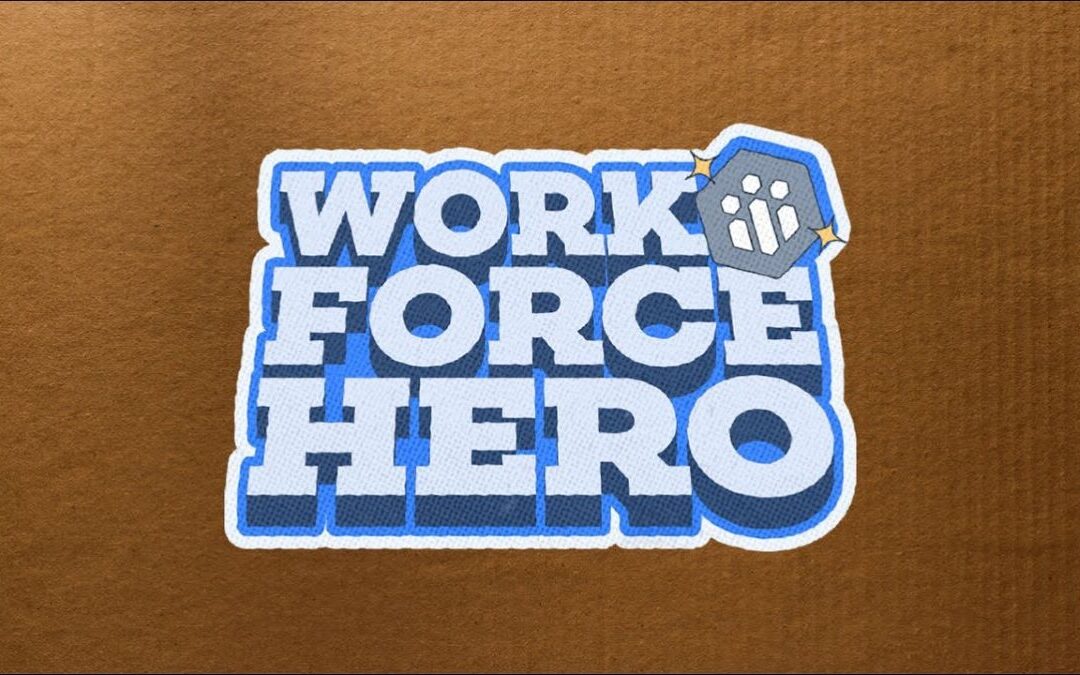
Apr 17, 2023 | newsroom
ShipHero has recently announced the launch of WorkforceHero as part of our industry-leading cloud-based Warehouse Management Software (WMS). As a new feature within the WMS, our clients can now leverage the data within the system to manage on-the-floor workers better, readjust priorities and track compliance throughout the day.
“What we asked ourselves was, how much is knowing what your warehouse team is doing at any given time worth to you?” Aaron Rubin, CEO of ShipHero, said. “We like to think that, as warehouse managers or even C-level executives, we know exactly what’s happening in the warehouse at any given time. But the truth is, that’s not the case.”
Improve Productivity by Taking a Big Picture Approach
WorkforceHero is designed to provide your operations team with an overview of what’s happening in your warehouse at any given moment. With that broad picture in mind, you can then use the data in ShipHero, knowledge of the priorities for the day, and your own expertise to:
Pre-assign and re-assign tasks
You know what projects need to be completed and which SLAs have to be met the minute you step on the warehouse floor. With WorkforceHero’s easy-to-read dashboard, your team can easily see who is on shift for the day and assign different tasks to each worker. Then, when they clock in, they’ll see exactly what they should be doing. This will help to eliminate any early shift confusion because jobs have already been assigned. And as priorities shift, you can re-assign different tasks to keep everything on track.
Maintain timekeeping, including breaks and lunches
WorkforceHero offers an easy clock-in, clock-out interface with the quick scan of a badge. This will keep track of employee in and out times and is also used to track breaks and lunches. The system will flag any employees who are not compliant so that you can easily see where and with whom issues need to be addressed. This increases employee accountability too.
Review performance records to find strengths and weaknesses
ShipHero already records a lot of data relating to picking and packing. With WorkforceHero, you can leverage this data to find your best pickers and packers and build teams that can fly through special projects. You can also identify team members who may need more training or oversight to increase overall productivity and help them succeed.
Create dynamic teams
With data comes insight, and WorkforceHero offers plenty. Use productivity data to keep your shifts well-balanced. Even out your pickers, packers, and water spiders to optimize productivity and efficiency throughout the day, no matter what’s on the docket.
Use Better Insights to Lower Labor Costs
WorkforceHero’s focus is to find ways for your teams to work smarter, not harder. With higher productivity levels brought about by pairing the right folks together, changing tasks and focus as priorities shift, and identifying areas for improvement, you can lower labor costs too. As a big chunk of your P&L, we know that finding some savings on labor can seem nearly impossible. But with WorkforceHero, you have the data and insights you need.
Plus, it will give your workers a better understanding of what is expected of them throughout the day and keep them motivated to move on to their next task. With the “ask for a job” feature, part of WorkforceHero’s touchscreen interface, you can decrease downtime between jobs. No employee likes to feel like they’re “stuck” during the day or have to search high and low for a manager. With “ask for a job,” you’ll be able to see which employees need a new assignment and provide direction quickly.
Provide Visibility to Off-Site Stakeholders
Another great benefit of WorkforceHero is its level of visibility. Anyone with the right permissions will easily be able to see what’s happening in the warehouse at any given moment. This is especially helpful for key stakeholders who may not visit the warehouse often or for those with multiple warehouses to oversee.
“Recently, a CEO told me of an experience he had during a winter storm,” Rubin said. “One of his warehouses needed to close due to weather, but he could still see what was happening in other facilities and determine how best to allocate resources and prioritize based on limited staff. That’s a huge shift in visibility that many owners just don’t have.”
WorkforceHero Works for Us, Too
Just like with ShipHero’s WMS, we’re confident in the importance of WorkforceHero because we’ve tested it ourselves. “We created the feature, first and foremost, to improve the productivity in our own facilities,” Rubin said. “We quickly saw how valuable this tool could be to our SaaS clients and started working on ways to make it available to everyone.”
We’ve seen great gains in productivity, especially with less downtime between projects and more autonomy for employees since they’re controlling their clock-ins and outs and break/lunch times. WorkforceHero has made it easier than ever to identify trouble spots and address them fast.
Rule the Warehouse with WorkforceHero
You know your teams work hard, but with WorkforceHero, you can now give your operations teams even more data and insight into increasing output and optimizing their team’s performance. Implementing WorkforceHero is fairly easy and just requires a call with our Client Support team to make sure all the jobs and roles are input correctly.
If you’re already a ShipHero WMS client, we invite you to reach out to Client Support now. If you’d like to learn more about ShipHero and WorkforceHero, schedule a demo with our Sales team today!

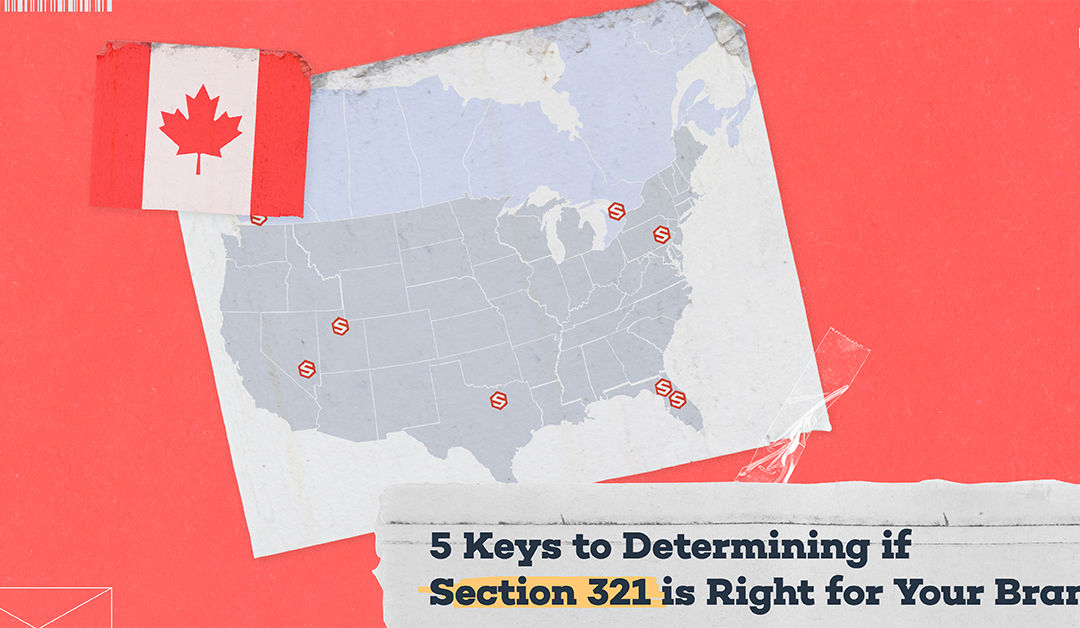
Sep 30, 2022 | Blog
By Maggie M. Barnett, Esq. COO of ShipHero
High shipping and duty fees are a constant reality of our globally interdependent world. Finding ways to lower these costs, and therefore, increase revenue, is one of the biggest tasks for all eCommerce brands. Now, as inflation has become higher and there is little end in sight, finding ways to save is more important than ever.
We’re going to discuss Section 321, a provision from U.S. Customs and Border Protection that allows U.S. citizens to order goods duty-free from Canada (up to $800 USD per day).
How can that help your business? Because, the duty savings isn’t just for the customer, it applies to the business too. Here’s the breakdown of Section 321 and the top ways to know if your brand is a fit for this cost-saving measure.
What is Section 321?
ShipHero began talking about the Section 321 program here, when we opened our first Canadian warehouses. It’s one of the best under-the-radar options for eCommerce businesses to save money.
In layman’s terms, Section 321 is a provision from the U.S. Customs and Border Patrol that allows U.S. citizens to order goods duty-free from Canada (up to $800 USD per day).
Here’s how that can help a business like yours:
- When you import goods to Canada, you will be qualified for a duty deferral or a duty drawback. In both instances, this means that once you send your products to a customer in the U.S., you will not need to pay duty fees on it (duty deferral). OR the Canadian government will reimburse any duty fees you’ve already paid (duty drawback).
- This savings can easily add up to 20% of your total landed costs and can really make a difference in your company’s success.
So, what’s the catch? There is no catch, which is the best part. And the even better part is that once you are a ShipHero Fulfillment client, we handle all the logistics for you.
5 Ways to Know if Your Company is a Fit for Section 321 Fulfillment
It can seem a little complicated, so here’s a breakdown of 5 key ways to know if Section 321 Fulfillment is right for your brand.
You already import to Canada and sell to U.S customers.
If you are already sending some or all of your inventory to Canada, and selling to U.S. customers, then you might be paying duty fees that you’re technically exempt from. Make sure that you are getting the benefits of Section 321 if you already ship products from Canada to U.S. customers.
You can decide to send some of your inventory to a Canadian warehouse and see just how much you could be saving. You can still fulfill from a U.S. location as well.
You need to save some money on shipping fees and taxes.
Taking advantage of Section 321 is easy – you just need to adjust your supply chain so that your inventory goes to Canada. You may qualify for a duty deferral, so that the duty fee is waived when the inventory is imported to Canada. Or once a U.S. customer places an order (for $800 USD or less), and that order is shipped, you’ll be eligible for a duty drawback.
Here’s a possible savings example:
- Import $12 pair of shoes to Canada
- 18% Duty rate = $2.16 tax on shoes
- Duty Elimination or Drawbacks save you $2.16 for just 1 pair of shoes!
Once you multiply that by 10 or 100 or 1,000, you’ll start to see the savings really add up.
You don’t sell or ship any of the items on the Section 321 exempt list.
There are some products that don’t qualify for Section 321. Here’s a rundown:
- Goods needing inspection as a condition of release, regardless of value
- Merchandise subject to Anti-Dumping Duty (ADD) and/or Countervailing Duty (CVD)
- Products that are regulated by the following Participating Government Agencies (PGAs):
- Food and Drug Administration (FDA) with some exemptions
- Food Safety Inspection Service (FSIS)
- National Highway Transport and Safety Administration (NHTSA)
- Consumer Product Safety Commission (CPSA)
- U.S. Department of Agriculture (USDA)
You’re ready to diversify your supply chain.
If the opportunity of saving up to 20% on duty fees isn’t quite enough to entice you, there’s the very real fact that supply chains are still slow. By sending your inventory to Canada, you can help to diversify your distribution network and possibly alleviate some of those delays.
You’re ready for partners you can rely on.
Besides the support of ShipHero’s Fulfillment team, we also partner with GHY, a Canadian-based broker that understands the nuances of Section 321 and most importantly, the paperwork.
And, we have partners like Flxpoint, who can make managing Section 321 easier. With their intelligent tracking capabilities, Flxpoint can automatically identify and re-route orders that qualify for Section 321. You can set parameters and preferences to determine how your orders are fulfilled. For example, if a U.S. customer orders less than $800 and that product can all be fulfilled from Canada, then Flxpoint will send the order to ShipHero’s Canadian warehouse, maximizing your savings and order profitability. (This assumes you are fulfilling from Canada and the U.S. or another location.)
Section 321 Can Make the Difference
With more competition and rising costs, eCommerce brands need to find the options that will bring them greater success. By taking advantage of Section 321, your brand can save real money, increasing your revenue and making it possible to reach an even higher level of success.
To find out more about Section 321, click HERE. To find out more about ShipHero’s fully outsourced fulfillment solution, talk to one of our Fulfillment Experts today.

Maggie M. Barnett, Esq. COO of ShipHero
ShipHero
About the author: Maggie M. Barnett, Esq., is the COO of ShipHero. She is responsible for planning and executing the overall operational, legal, managerial and administrative procedures, reporting structures and operational controls of the organization. Barnett’s greatest strengths are leadership, risk mitigation, change management and a passion for business transformation. She is known for her expertise in delivering operational excellence and an ability to provide guidance and mitigating risk. Her leadership of ShipHero is grounded in a servant mentality, always doing the right thing for our stakeholders. Her passion for ShipHero comes from the ability to drive operational excellence throughout the organization impacting the lives of our employees, customers, and partners.
Follow Maggie on Twitter & LinkedIn.












